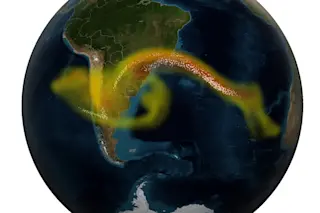In the Afar Depression — a vast desert in northeast Ethiopia — pastoral tribes survive amid an alien landscape of steaming vents, boiling geysers and even a lake of lava. But on a September day in 2005, the Afar herders witnessed a scene unlike anything they had ever seen.
The ground beneath their feet shuddered violently with the first of hundreds of earthquakes that would sweep through the region over the course of two weeks. A huge crack — nearly 40 miles long and up to 25 feet wide — opened in Earth’s crust. And a volcanic eruption from a second crack launched clouds of ash that dimmed the sky for days. Terrified, the nomads believed Allah was punishing them for not strictly adhering to religious rules.
The truth was no less dramatic. For millions of years, a bubble of hot, possibly molten rock has been slowly swelling up beneath ...















